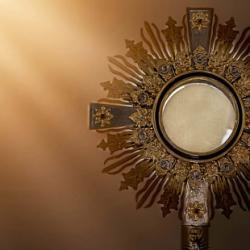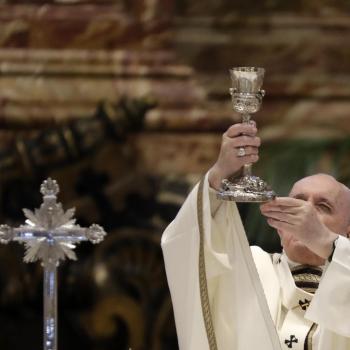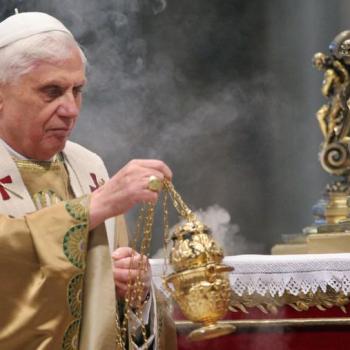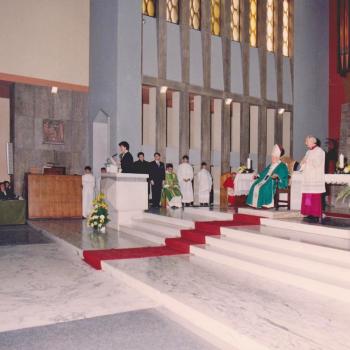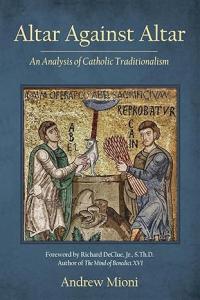
Andrew Mioni’s book, Altar Against Altar: An Analysis of Catholic Traditionalism, is a compelling and powerful work, and it is precisely what the Church needs in these perilous times, when prelates are in open rebellion against Pope Francis, including Archbishop Carlo Maria Viganò, who denies the pope’s legitimacy and is on the brink of formal excommunication, and Bishop Athanasius Schneider, who is calling for resistance to the pope’s decisions to curtail use of the 1962 Missal. Bishop Schneider even claims—in clear opposition to the declarations of Pastor Aeternus, Mediator Dei, and even the Council of Trent—that the Pope does not have the authority to end the use of the older form of the Roman rite.
Andrew Mioni knows his subject well. He grew up in the Catholic traditionalist movement and was involved with four different traditionalist groups. He was raised in the Society of St. John (SSJ) and the Fraternal Society of St. Peter (FSSP), he attended a high school run by the Society of St. Pius X (SSPX), and as a young adult he attended Mass with the Institute of Christ the King Sovereign Priest (ICKSP).
Mioni’s work is an indispensable guide for anyone seeking to understand the complexities of the crisis in the Catholic Church, especially the factors that contributed to the rise of traditionalism and the challenges posed by the groups and individuals swayed by this harmful ideology.
Mioni navigates through the tumultuous waters of the Church’s recent history (roughly the last two centuries), with a keen analytical eye and a remarkable breadth of vision. He explains the factors leading to the decision to call the Second Vatican Council, as well as the sociological and cultural movements (Atheism, Free Love, Communism) that contributed to many of the controversies that arose afterwards. Mioni discusses the factors that led to many of these conflicts, including cultural conditioning, misinterpretation of the conciliar documents, and—in many cases—uneven implementation. Factors such as these led to resistance to the Council in some quarters, but Mioni also describes how this resistance typically involved a faulty and ahistorical theological paradigm.
A strength of the book is its response to the “state of necessity” argument employed by the SSPX and similar groups to justify their actions and status within the Church. Mioni analyzes this theory by critically assessing the validity of its theological, canonical, and sociological claims. He also explores the implications for groups that determine that the current situation gives them “supplied jurisdiction,” allowing them to operate without the authority of the pope and diocesan bishop. Mioni’s perspective balances doctrinal fidelity with pastoral concerns.
Mioni later delves into the resulting phenomena, such as clashing Church authorities, rival altars, and rival marriage tribunals. With these examples, Mioni illustrates the divisive effects that refusal of submission to the pope (a submission necessary not only in word, but also in deed) has on the Church’s substantial unity.
Mioni shows how the fragmentation and isolation of self-proclaimed “traditional Catholics” gives scandal to the world and weakens our evangelical mission and the effectiveness of our efforts to confront the challenges posed by secular modernity. Mioni’s analysis of these issues is both thorough and empathetic, acknowledging the pain and confusion experienced by many in the Church while also critiquing the self-enclosed circle mentality that often characterizes traditionalist enclaves, and he does this from a place of experience within these circles himself.
The author poses the incisive question: When is the crisis over? If schismatics refuse to defer to the Church’s hierarchical structure—especially the pope—can they ever reach an agreement that isn’t simply private judgement wrapped in a pseudo-justification of emergency? On this question, Mioni outlines potential pathways toward resolution, advocating for a renewed embrace of the “New Springtime” envisioned by the Second Vatican Council and imploring traditionalists to cease contributing to the crisis of authority and of functionality over faith which has hampered this long-needed renewal. He suggests that the path forward involves a conciliatory approach that appreciates the rich heritage of the Church’s liturgical and theological traditions. This approach requires openness to legitimate development and renewal—otherwise, traditionalists are simply embracing the same ecclesiological errors that characterize the Eastern Orthodox position, post-schism.
This book is a critical addition to the ongoing discussion about the future of the Catholic Church. It is essential reading for scholars, clergy, and laypeople who are wrestling with these issues and offers a way forward that respects the Church’s heritage while also welcoming its future.
In an ecclesial atmosphere where conservative Catholics often hesitate to critique traditionalism due to a “no enemies to the right” policy, Andrew Mioni’s book Altar Against Altar emerges as a bold and constructive contribution. His work illuminates the ecclesiological dangers and the all-too-present danger of schism in traditionalist circles.
(This review was initially posted on the news site Where Peter Is, July 3, 2024)
[Book details: Andrew Mioni, Foreword by Richard DeClue, Jr. SThD. Altar Against Altar: An Analysis of Catholic Traditionalism. Saint Louis, MO: En Route Books and Media, LLC, 2024. 208 pgs.]






